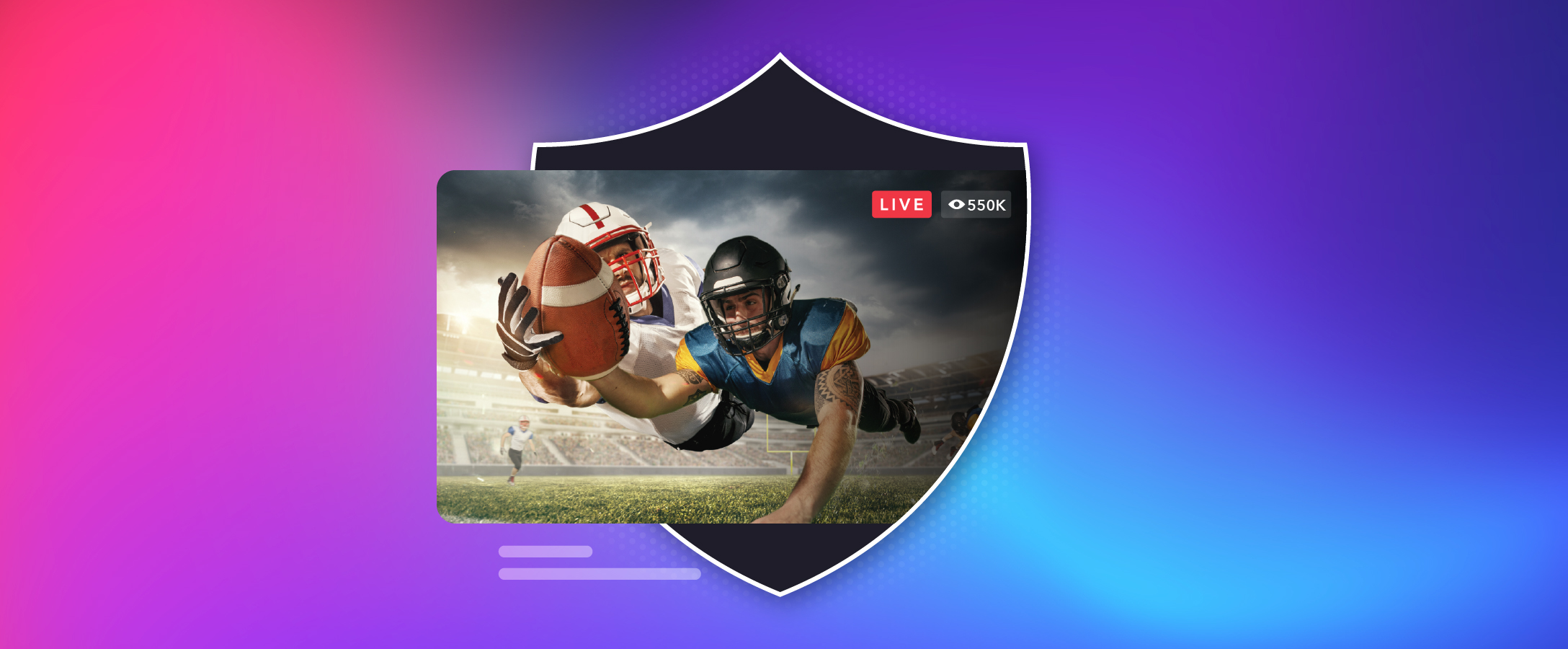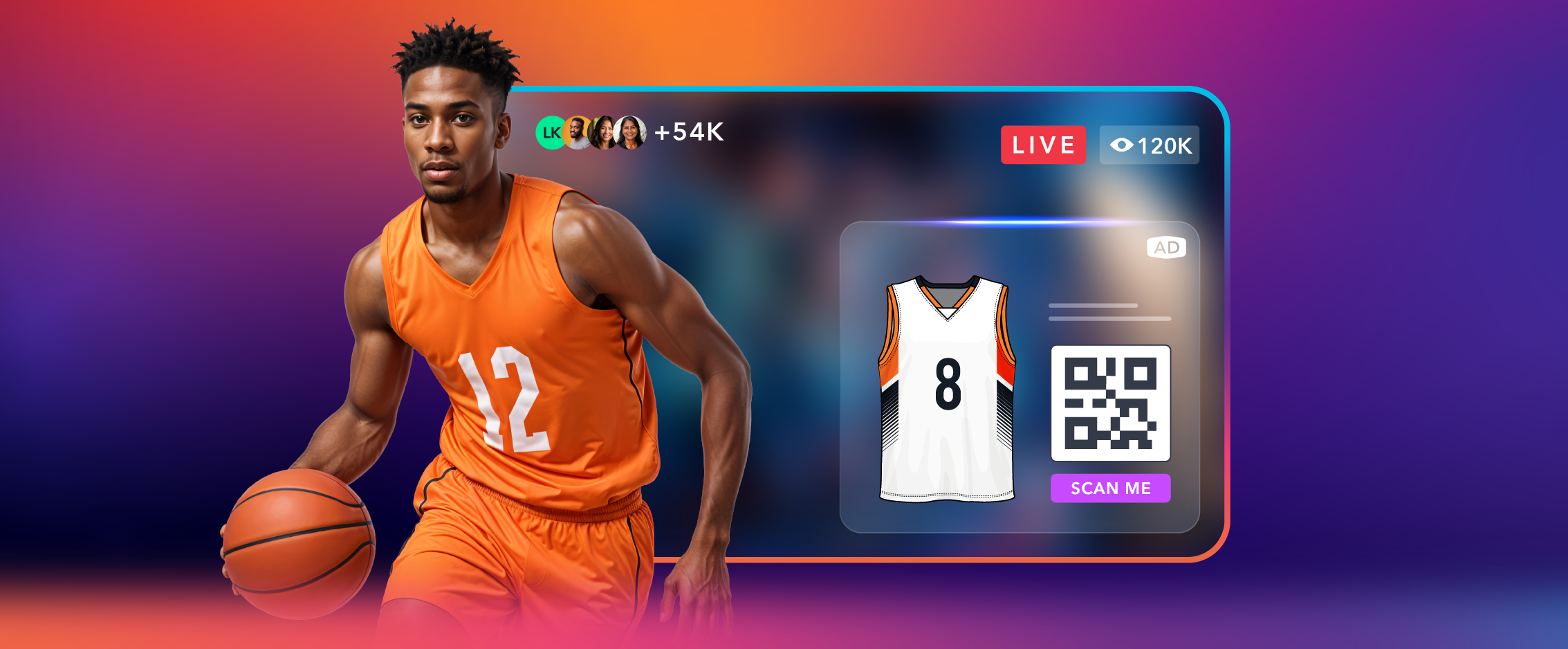DRM, which stands for digital rights management, is a crucial component for many professional broadcasts. This security tool helps prevent content from being pirated or otherwise compromised.
In this article, we delve into the details of what DRM is and its significance in streaming. We’ll also discuss how DRM works and what it protects before weighing some of the pros and cons of this security measure.
What is DRM?
Digital rights management (DRM) is a set of access control technologies that content creators, publishers, and other copyright holders use to protect their digital content from unauthorized use or piracy.
In an increasingly digital world, DRM is crucial for protecting your intellectual property rights and maintaining control over your content.
The importance of DRM in streaming
Remember those anti-piracy ads that used to play before a DVD started? That was back in the days when pirating something often required sneaking into a theater, filming the screen, and burning a new DVD yourself.
Movies, games, software, and all other sorts of IP have progressed significantly, but so has piracy. That is why new technologies like DRM exist to combat it. DRM provides you with a mechanism for protecting your rights as a creator and helps ensure you receive fair compensation and ownership of your work.
The U.S. Chamber of Commerce reports that digital piracy costs the U.S. economy between $29.2 billion and $71 billion annually. These figures underscore the substantial financial impact of unauthorized content distribution and consumption. Implementing digital rights management helps mitigate these potential losses by restricting access to legitimate users.
Additionally, DRM facilitates the enforcement of copyright laws. These laws help maintain the balance between public access to information and creators’ rights. Without DRM, creators would have less incentive to produce high-quality digital content, as the risk of losing revenue to piracy could outweigh the potential profits.
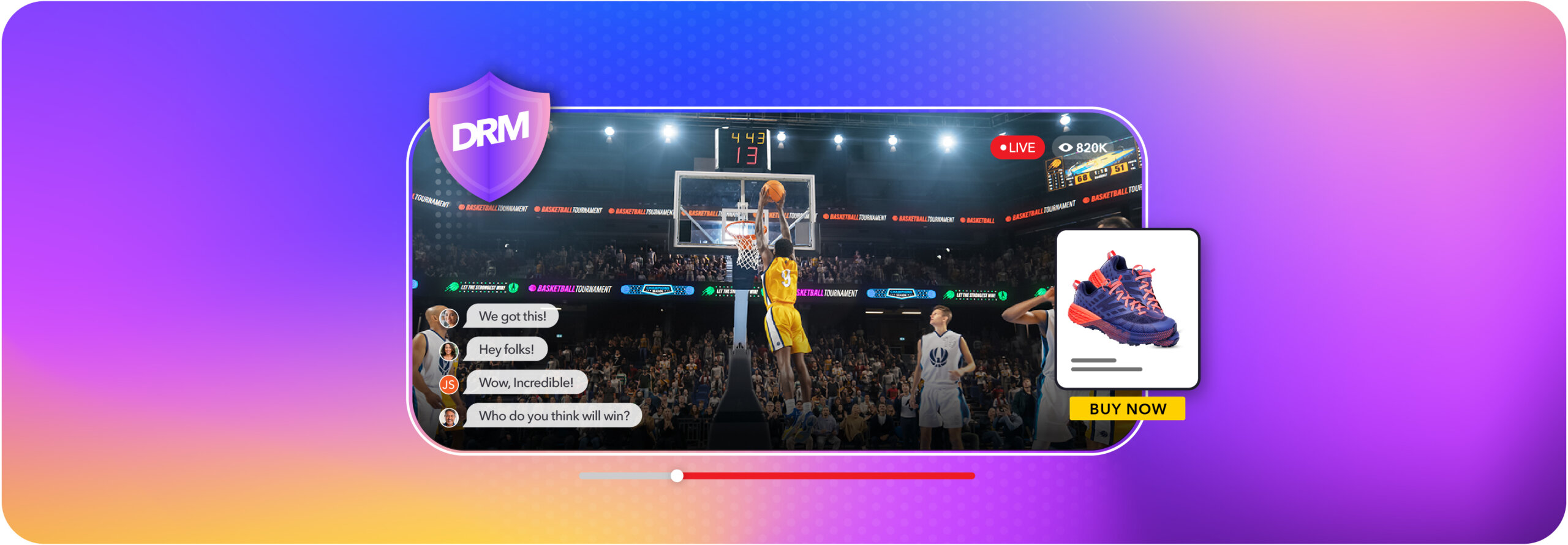
How does DRM work?
DRM’s primary objective is to prevent unauthorized copying, sharing, and modification of digital content. This security measure operates by embedding code into the content that controls who can access and use it.
This allows publishers or other copyright holders to:
- Control distribution: Ensure that only authorized users can access content, such as pre-made content libraries or live events
- Prevent unauthorized duplication: Restricts the ability to make illegal copies
- Enforce usage policies: Implement restrictions on how content can be used, such as limiting access to a specified number of devices
- Protect Revenue: Ensure that legitimate sales and use generate revenue
Understanding DRM software
There are various DRM software options available that cater to different types of digital content, including music, video, ebooks, and software. These solutions typically involve:
- Encryption: Securing the content so that it can only be accessed by authorized users
- Licensing: Providing keys or licenses that grant access to the content
- Authentication: Verifying the identity of the user attempting to access the content
The DRM marketplace is diverse, encompassing solutions with built-in DRM software, standalone services, and devices.
For example, Dolby OptiView’s real-time streaming offers robust DRM features integrated directly into our streaming services, making it easy to protect your content from privacy threats while maintaining high-quality real-time streaming experiences.
Standalone DRM solutions, such as Adobe DRM, castLabs, Microsoft PlayReady, and Google Widevine, are options, as well. These services provide comprehensive tools for encryption, license management, and content distribution. However, the cost of these solutions varies according to the level of protection and features they offer.
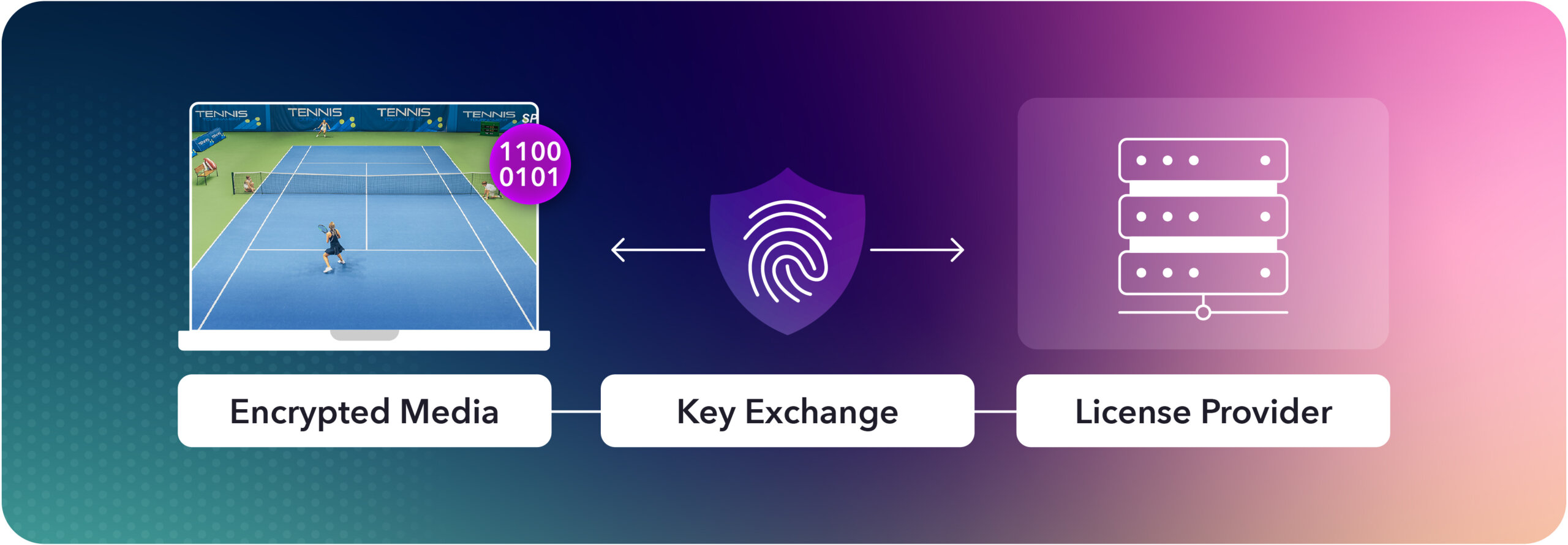
Popular DRM use cases
DRM is used in several industries that distribute digital media, including video streaming. Here’s how DRM works in streaming and other top use cases.
Streaming services
Platforms like Netflix, Hulu, and Amazon Prime use DRM to prevent unauthorized distribution of movies and TV series. These services rely on digital rights management to ensure that only paying subscribers can access their content.
It is particularly valuable for iGaming and sports streaming.
Music
Musicians and record labels utilize DRM to prevent unauthorized downloading and sharing of music. Spotify and Apple Music are two major platforms that embed DRM into their systems to control who can listen to and download songs.
Digital documents
Companies utilize digital rights management programs to safeguard sensitive documents, reports, and other critical files from unauthorized access. This is especially imperative in fields like finance and government.
Ebooks
Book leaks can be an author and publishing company’s worst nightmare, so publishers employ DRM technology to control who can access ebooks and ensure authors are adequately compensated.
Amazon Kindle and Apple Books are examples of platforms that implement DRM to prevent the copying, sharing, and printing of digital texts.
Software
Without DRM, software is also vulnerable to unauthorized copying and selling. This includes both consumer software, like Microsoft Office, and specialized software used in professional fields, such as CAD programs.
Benefits of DRM for streaming
There are several benefits to using DRM to protect your streaming media. Here are some pros to leveraging DRM.
Revenue protection
When someone pirates a piece of content, the producer of that content loses revenue opportunities. Movie leaks online, for example, deter would-be moviegoers from attending a theater screening and paying for a ticket.
DRM helps ensure that creators, publishers, and distributors receive compensation for their work or investments and is critical in maintaining the economic viability of digital content industries.
Content control
Organizations can use DRM to specify not only who can access their content, but also how it can be accessed. This way, it’s less likely for someone to misuse or abuse the content.
For example, a content creator can control whether their content is published on a specific streaming service, thereby maintaining the integrity of their work.
Legal compliance
Legal compliance is another significant benefit of DRM. Digital rights management solutions often include features and guidelines that help producers ensure compliance with legal regulations, not just potential pirates.
Legal compliance helps businesses avoid costly lawsuits and penalties.
Market Expansion
If you want to distribute your content in new markets but want assurance it will be protected, then DRM is the way to go. For example, a film studio might be more inclined to release a movie internationally if it knows it’s safe from piracy.
Challenges of DRM for streaming
DRM does come with a couple of drawbacks that you should be aware of. Let’s take a quick look.
User experience
Depending on the type of DRM solution you use or its specific features, the technology can hinder the user experience if it imposes overly restrictive limitations on legitimate users.
They might find these restrictions inconvenient, such as the number of devices they can access purchased content, which can cause frustration. If this is the case, then consumer backlash can pose a significant threat to the business.
Technical issues
Implementing DRM can be complex and may result in technical issues if not appropriately integrated, such as compatibility problems with specific devices or platforms.
These technical hurdles can deter users from purchasing your content if they encounter them (though they may not be aware of the exact source of the issue). Ensure that the software you use is seamlessly integrated into its platform.
Piracy adaptation
Digital rights management technology continues to advance, but so does piracy. It’s unfortunate, but a reality producers need to be aware of.
Determined pirates may still find ways to circumvent protections that necessitate ongoing updates and improvements, so there is no airtight solution.
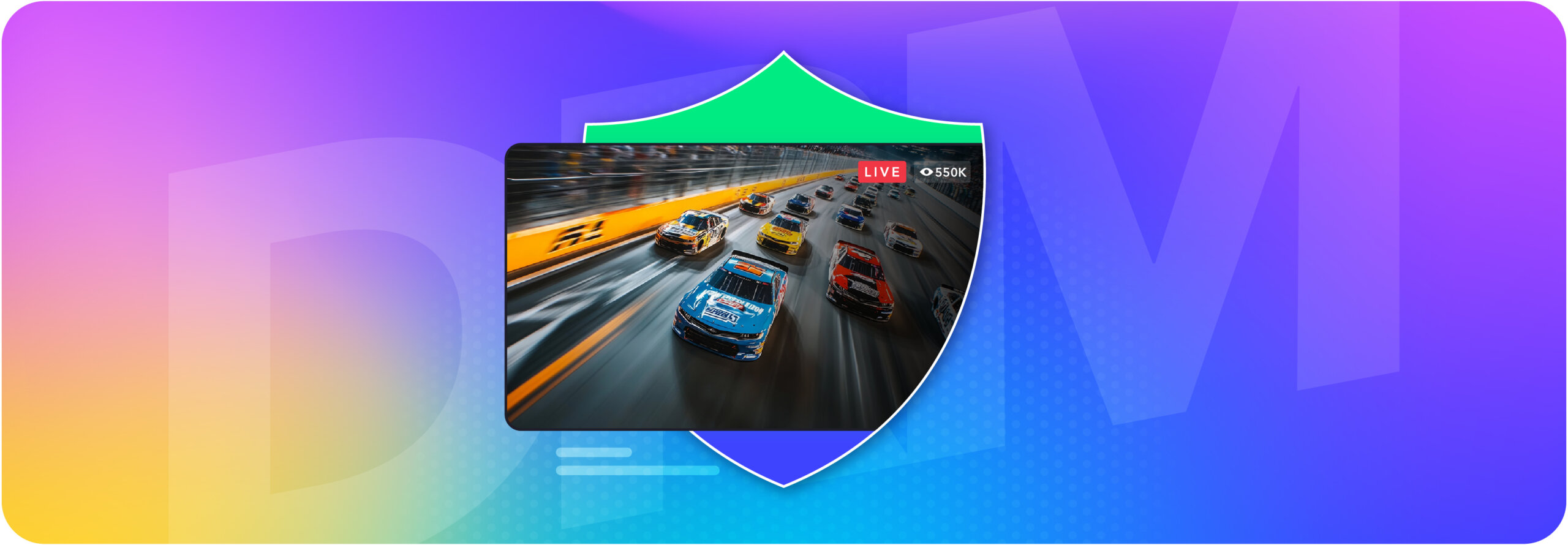
FAQs
“DRM” stands for digital rights management.
DRM is controversial because it often imposes restrictions on how consumers can use digital content, which some view as limiting their creative rights.
Critics argue that DRM can inconvenience legitimate users and is not always effective at preventing piracy. However, advocates believe it’s essential for protecting IP and ensuring fair compensation.
It varies by area and jurisdiction, but in some, yes, it’s illegal to remove DRM protections from digital content. Doing so could violate copyright laws and result in legal penalties.
Removing DRM also undermines content creators’ efforts to protect their IP, though others may argue that consumers should have the right to remove DRM from content they legally own, especially if it interferes with their legitimate use.
Game developers and studios use DRM to prevent pirates from copying and distributing their games. This includes measures like requiring online activation, limiting the number of installations, and embedding unique license keys.
DRM in gaming helps developers protect their revenue and control how fans play their games. An example is Denuvo, a popular DRM solution that encrypts game files and requires online verification to play.
Many sports streaming services are particular about which viewers can access different sporting streams. This is because of regional broadcasting agreements that create blackouts for local teams. DRM can be used to enforce these restrictions.
DRM is also significant for streams that involve live sports betting. By creating a more secure streaming experience, you can keep the experience fair for all bettors.
Streaming services employ DRM to encrypt video streams and require authentication before playback. Google Play Movies, for instance, utilizes Widevine DRM, while Apple TV+ employs FairPlay DRM.
Final thoughts
DRM is beneficial for many streaming setups since it provides security and helps prevent your stream from being compromised or pirated. When you spend time and resources producing or licensing content, you don’t want it to end up in the wrong hands.
Dolby OptiView offers a robust streaming solution with built-in DRM to protect your digital content. By integrating DRM directly into our streaming platform, we ensure that your content remains secure while providing a seamless and high-quality viewing experience for your audience.
Contact us to learn more about how leveraging DRM and other security measures can help you elevate your viewer experiences.



